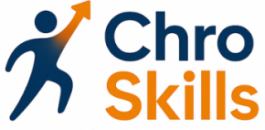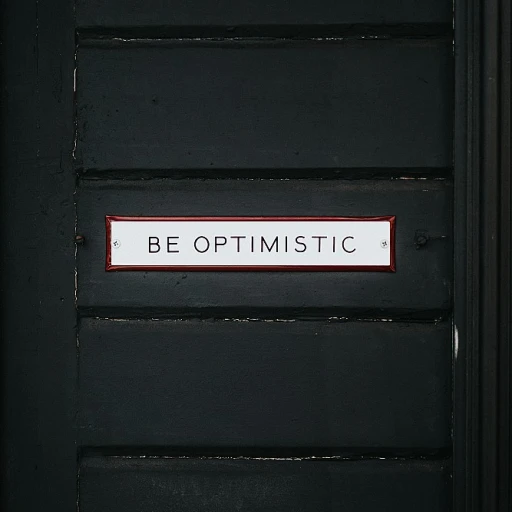
Defining Managing Up in the HR Context
Grasping the Concept of Managing Up
In today's dynamic work environments, understanding the nuances of managing up is crucial for HR leaders who aim to foster a successful career. At its core, managing up involves the strategic alignment of your work style with the expectations and goals of your boss or senior leaders, thus enhancing the working relationship. Effective managing requires a blend of leadership skills, including strong communication and problem-solving abilities. It is about making your job—and, by extension, your manager's job—easier by anticipating needs, understanding work styles, and seeking feedback to improve team collaboration and employee engagement. To manage effectively, HR professionals must navigate through various communication styles and adapt their approach to meet the demands of different personalities among the leadership team. This often involves providing insights that influence decision making, efficiently managing work priorities, and developing strategies for career development within the organization. Career success and growth are anchored on the ability to build strong relationships with management. This requires a keen understanding of leadership dynamics and a clear recognition of how one's role contributes to broader organizational goals. To delve further into mastering the intricacies of conflict resolution in this context, refer to our detailed guide on how HR leaders can effectively resolve workplace conflicts.Key Skills for Effective Managing Up
Essential Competencies for Leading Upward
Navigating the nuanced dynamics of "managing up" involves a precise blend of competencies, vital for any HR leader seeking to influence senior leadership effectively. Embedding these skills within one's professional repertoire not only advances personal career goals but also enhances the organization's overall leadership dynamics. First and foremost, communication skills are indispensable. Understanding and adapting to diverse communication styles improves how messages are conveyed and received. By practicing effective communication, HR leaders can effectively share insights, ensuring they align with senior management's objectives and expectations. This involves tailoring messages to suit the preferences of different stakeholders, thereby increasing the chance of positive outcomes. Problem-solving capabilities are another cornerstone of managing up. HR leaders must often tackle complex issues, navigating intricacies that senior leaders may not be immediately aware of. By demonstrating strong problem-solving skills, managers can provide actionable recommendations, fostering confidence among top-tier leadership teams. Self-awareness is yet another critical skill for HR leaders. Recognizing one's own work style and potential biases enhances the ability to engage in meaningful dialogue with senior executives. This awareness allows HR professionals to reflect on their relationship with higher management, adjusting strategies for improved collaboration. Additionally, relationship-building skills are crucial. HR leaders must foster strong connections with their superiors, which involves seeking feedback regularly and using it constructively to refine approaches and strategies. Building a trustful working relationship with one's boss contributes to a supportive work environment, conducive to furthering both personal and organizational success. As HR leaders refine these competencies, they foster a culture of leadership that is responsive and agile. For a deeper dive into strategies for resolving workplace dynamics with finesse, explore conflict resolution techniques that are especially useful in complex HR settings.Building Strong Relationships with Senior Leadership
Fostering Robust Connections with Executive Leadership
Building strong relationships with senior leadership is pivotal for any human resources leader aiming to excel in managing up. This requires a deep understanding of your boss's work style and communication style, ensuring that interactions are not only effective but also impactful. By aligning your communication with their preferred methods, you can facilitate a more open and fruitful dialogue. Establishing a solid rapport begins with active listening and a genuine interest in the organization's strategic goals. Understanding the objectives and pressures that the senior management faces can help you tailor your HR insights to provide pertinent and actionable feedback. This not only enhances your credibility but also portrays you as a competent partner in decision making. Moreover, it's crucial to engage in regular and proactive communication with the leadership team. This entails not just formal meetings, but also informal touchpoints where you can seek feedback and discuss potential concerns outside the confines of structured appointments. Such engagements can often reveal underlying issues, allowing you to present solutions that address both HR and organizational needs. In addition to these tactics, enhancing your own leadership skills is vital. By demonstrating effective problem-solving abilities and a capacity for decisive action, you reinforce the trust that senior leaders have in you. This, in turn, strengthens the overall working relationship, creating a partnership where both your team and the organization can thrive. Ultimately, managing up involves tuning into the dynamics of your organization’s leadership. By doing so, you pave a smoother path for career development and create an environment where managing work becomes less about control and more about collaboration and success. For professionals looking to deepen their understanding of leadership dynamics further, consider exploring leadership strategies within the realm of diverse industries where executive interactions are key to achieving organizational goals. Explore more about leadership dynamics.Communicating HR Insights to Influence Decision-Making
Translating HR Insights into Strategic Influence
Communicating HR insights effectively to influence decision-making is a crucial skill for any Chief Human Resources Officer (CHRO). This involves not just sharing data but translating it into actionable insights that align with the organization's strategic goals. Effective communication in this context requires a deep understanding of both the HR landscape and the broader business environment.
To achieve this, a CHRO must be adept at tailoring their communication style to suit different audiences. This means understanding the preferred communication styles of senior leadership and adapting accordingly. Whether it’s through detailed reports, concise presentations, or informal discussions, the ability to convey complex HR data in a clear and compelling manner is essential.
Aligning HR Goals with Organizational Objectives
One of the key aspects of managing involves aligning HR goals with the overarching objectives of the organization. This requires a strategic mindset and the ability to see the bigger picture. By demonstrating how HR initiatives contribute to the company’s success, a CHRO can effectively manage up and gain the support of senior leadership.
Building a strong working relationship with senior leaders is crucial in this regard. It involves regular communication and feedback sessions to ensure that HR strategies are aligned with the company’s direction. This proactive approach not only enhances employee engagement but also positions the HR team as a vital contributor to the organization’s success.
Utilizing Data-Driven Insights for Decision Making
In today’s data-driven work environment, leveraging analytics is a powerful tool for influencing decision-making. A CHRO must be skilled in interpreting data and using it to support their arguments. This involves presenting data in a way that highlights trends, identifies potential problems, and suggests solutions. By doing so, the CHRO can provide valuable insights that help shape strategic decisions.
Moreover, seeking feedback from team members and other stakeholders can provide additional perspectives that enhance the quality of decision-making. This collaborative approach not only fosters a culture of open communication but also ensures that the HR team is aligned with the needs and expectations of the organization.
In conclusion, effective communication of HR insights is a multifaceted skill that requires a combination of strategic thinking, adaptability, and data literacy. By mastering these skills, a CHRO can successfully manage up and drive positive change within the organization.
Navigating Challenges in Managing Up
Addressing Potential Roadblocks and Finding Solutions
Managing up, especially within the HR landscape, comes with its fair share of challenges, necessitating adept problem solving and conflict resolution skills. For instance, the work environment can evolve rapidly, and managing involves staying adaptive to shifting priorities and expectations from senior leadership. Here are some of the common challenges HR professionals face while managing up and how to navigate them effectively:- Lack of Clarity on Goals: Often, discrepancies in understanding what senior management wants can arise. It is crucial to clarify these goals to ensure alignment. Engage in open dialogue to understand your boss’s work style and the overall vision they have for your team. This will not only refine your approach but also improve employee engagement.
- Communication Styles: Effective communication can be impeded by differences in communication styles between you and your senior leadership. Adapt your approach to suit their preference, be it formal emails, in-person discussions, or quick updates. The more effectively you align your communication style with theirs, the smoother the working relationship will be.
- Feedback and Trust: Building trust is a continuous process, and seeking feedback is a critical component. Encourage regular feedback from both your senior leadership and your team members. This bidirectional communication strengthens trust and enhances your career development opportunities.
- Balancing Leadership Goals and Employee Needs: Striking a balance between the strategic goals of your leadership and the operational needs of employees can be daunting. Use your management skills to present solutions that meet the needs of both ends. Building strong relationships with senior leadership revolves around fostering a cooperative environment where feedback flows freely.
- Time Management: Managing requires effective time management strategies to ensure that you are prioritizing tasks which align with management objectives. Develop a structured approach to allocate time efficiently across various responsibilities while remaining flexible for sudden changes.













